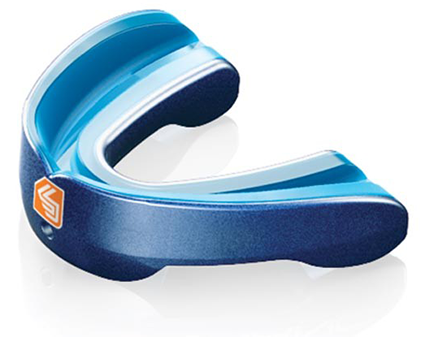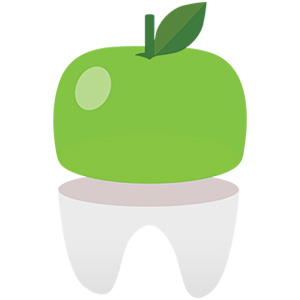We make sure kids and teens pile on the shin guards, pads and helmets when they play sports, but what about protecting their teeth and jaws? A mouthguard is an important piece of safety equipment, and it can go a long way in preventing dental injuries. While mouthguard use is on the rise, it’s overlooked in some sports. As a Park Slope orthodontist, I see a lot of dental trauma from baseball, basketball and soccer, none of which typically require mouthguards. In cases where it’s not mandatory, Fresh Orthodontics recommends parents take it upon themselves to make sure their child or teen wears one. We know they look a little awkward, but do you know what looks more awkward? Missing teeth! According to the American Dental Association, studies show athletes are 60 times more likely to experience harm to their teeth if they forgo a mouth protector. Preserve your offspring’s smile (and your own if you’re playing sports) and get on the mouthguard bus. Here’s the scoop:

What Type of Young Athletes Should Wear a Mouthguard?
If your kid is involved in contact sports like boxing, football, ice hockey, lacrosse or field hockey, mouthguard use is probably established. However, injuries occur in a wide range of athletic endeavors (we’re looking at you basketball!) and even non-contact activities like skateboarding. The American Dental Association recommends using a mouthguard for the following sports:
| Acrobatics Basketball Bicycling Boxing Equestrian events Extreme sports Field events Field hockey Football Gymnastics Handball Ice hockey Inline skating Lacrosse Martial arts |
Racquetball Rugby Shotputting Skateboarding Skiing Skydiving Soccer Softball Squash Surfing Volleyball Water polo Weightlifting Wrestling |
 If your child or teen wears braces or another fixed orthodontic appliance, a mouthguard is even more of a must. Getting hit in the mouth while wearing braces is no fun, and you also have to contend with the risk of broken brackets. However, if you’re participating in any activity that could result in trauma to the mouth, braces or no braces, adult or child, using a mouthguard is a solid decision.
If your child or teen wears braces or another fixed orthodontic appliance, a mouthguard is even more of a must. Getting hit in the mouth while wearing braces is no fun, and you also have to contend with the risk of broken brackets. However, if you’re participating in any activity that could result in trauma to the mouth, braces or no braces, adult or child, using a mouthguard is a solid decision.
Why are Mouthguards Important?
Mouthguards protect you from traumatic jaw and dental injuries. A mouthguard shields against chipped, broken and missing teeth, root fractures and luxation (when the tooth is still in the socket but in the wrong position). In addition, it acts as a cushion between the teeth and/or braces and soft tissue in your mouth, like your tongue, lips and cheeks, to ward off cuts and bruises that can come from contact. It also helps to dissipate the force from blows that can lead to jaw fractures and other injuries. Plus, it keeps those orthodontic appliances safe!
Need Advice About Mouthguards? Book a Free Consultation
Choosing the Right Mouthguard
There are three main types of mouthguards:
- Stock mouthguards: These are the pre-formed, ready to wear kind. If this is the route you take, look for ones that have different size options or the fit can be off, which will interfere with breathing and talking and won’t provide enough protection.
- Boil and bite mouthguards: These babies can be purchased at most sporting good stores. They’re boiled in water to make them soft and pliable and then they’re molded to the shape of the teeth. It’s important to be careful that they don’t lock onto your braces brackets and cause breakage.
- Custom-fitted mouthguards: Custom-fitted mouthguards are what most dentists recommend. However, they do cost more than their stock or boil and bite counterparts and your child or teen’s tooth position will change after their orthodontic treatment, meaning you’ll have to replace it. A dental professional makes an impression of your mouth over which the mouthguard is molded using special material. They can range from flexible to semi-rigid depending on the patient’s individual needs.
Usually a mouthguard is designed for the upper teeth. However, depending on your specific risk factors and whether or not you wear braces, you may need to use one over your lower teeth as well. A well-designed mouthguard will be comfortable and durable, won’t dislodge during activity and will not have a major effect on breathing or speech.
 We generally recommend Shock Doctor brand mouthguards to our Brooklyn orthodontics patients. They offer models with cutouts for braces, ones with or without a strap, upper and lower guards and a variety of sizes all with a gel fit lining that when warmed molds to your teeth. The products are affordable and high quality. The company also has custom mouthguards.
We generally recommend Shock Doctor brand mouthguards to our Brooklyn orthodontics patients. They offer models with cutouts for braces, ones with or without a strap, upper and lower guards and a variety of sizes all with a gel fit lining that when warmed molds to your teeth. The products are affordable and high quality. The company also has custom mouthguards.
New mouthguards are even going high tech. Recent designs from Force Impact Technologies and i1Biometrics contain sensors and send data to the sidelines about the force and duration of collisions to detect possible concussions in contact sports and alert coaches that a player should be evaluated. Who knew mouthguards could play such an important role in athlete safety?
With all of the choices at a wide range of price points, outfitting your child or teen with a mouthguard has never been easier. If you need some guidance, feel free to ask Dr. Khanna and he can help you determine which mouthguard will work best based on your kid’s needs and chosen sport. Contact Fresh Orthodontics today, to get started on perfecting and protecting your child’s smile.













